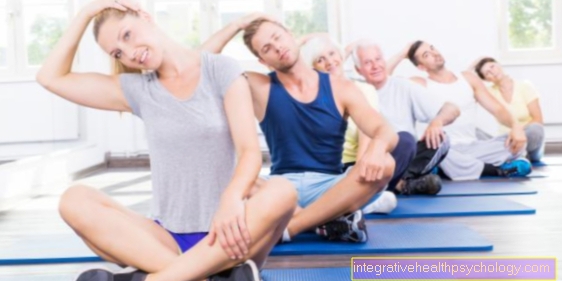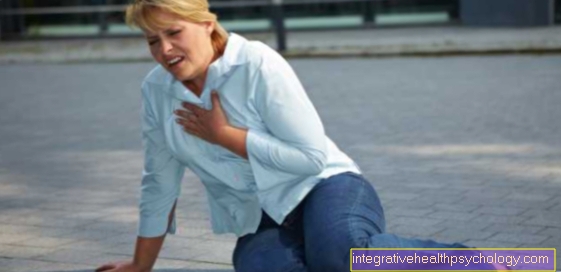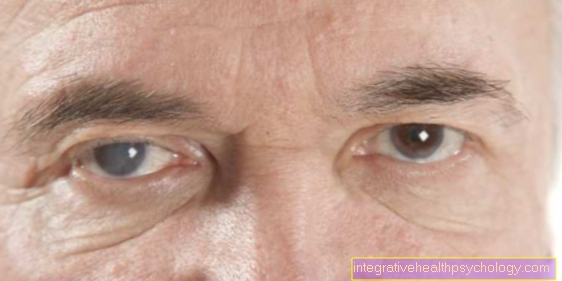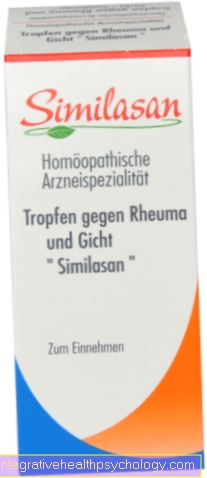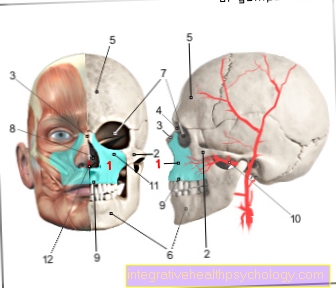yoga
introduction
The term yoga refers to a teaching from India that is 3000-5000 years old and consists of breathing exercises, meditations and the physical exercises known in the West. Yoga is enjoying increasing popularity, which can be measured by the increasing number of yoga studios.
In addition to the sporty aspect of asanas (exercises), yoga is said to have a positive effect on numerous physical and mental complaints, some of which have also been scientifically proven.

What forms of yoga are there?
There are many different styles of yoga, the main differences being how long each exercise is held and whether there is additional equipment. Yoga is not a rigid system, but is subject to constant change and new forms are added.
Some popular yoga styles are briefly introduced below:
-
Hatha Yoga is particularly popular in German-speaking countries and is characterized by the slow and relaxed performance of the asanas and is therefore particularly suitable for beginners.
-
Vinyasa Yoga focuses on the synchronicity of breath and flow of movement. The exercises are usually a little more strenuous than with Hatha Yoga and end with a stretching unit.
-
Ashtanga Yoga is characterized by the same sequence of asanas, which flow into one another. It forms the basis of power yoga, but the sequence is different.
-
Bikram Yoga (Hot Yoga) is very popular in America and is performed in a room heated to 40 ° C. The increased sweating is said to promote the detoxification of the body. A Bikram yoga class includes 26 exercises.
-
Iyengar Yoga focuses on the alignment of the body during the asanas. Due to the rapid transition between the exercises, this yoga style is quite dynamic.
-
Yin Yoga is a particularly gentle yoga practice that is also becoming more and more popular in Europe. The asanas are held for a very long time and the focus is also directed to the joints.
Which diseases or symptoms can yoga be used against?
There are numerous studies of yoga that have explored its beneficial effects on the mind and body. While conventional medicine mainly focuses on treatment with medication or interventions for physical ailments, yoga can be seen as a supplement.
It has been proven that regular yoga exercises and meditation can lower stress, support the immune system, reduce anxiety disorders and lower heart rate, blood pressure and breathing rate.
In the case of depression, yoga can have a mood-enhancing effect and significantly increases serotonin levels. Yoga increases flexibility and ensures in the long term that tense muscles and connective tissue (fascia, ligaments, tendons, etc.) are loosened. This should inhibit osteoporosis and relieve back pain and joint problems.
The muscle tone is increased or maintained.Pain from arthritis, carpal tunnel syndrome, and other chronic conditions can be reduced through yoga.
It has been shown to have positive effects on the cardiovascular system. The oxygen level and the number of red blood cells increases. Blood thinning properties have been demonstrated.
For cancer patients, yoga can support therapy by increasing general well-being and reducing stress.
In addition, yoga is an alternative to drug therapy for insomnia, because the pharmacological side effects of sleeping pills can then be avoided.
Yoga can support psychotherapy in patients with an eating disorder or an addiction disorder, as it has been observed that self-destructive behavior decreases with regular yoga practice.
Yoga for neck tension
Tension in the neck and shoulder area is very common. Exercises that open the shoulders are useful for loosening up the muscles. E.g. these exercises will help:
-
Guarda eagle
-
Integrate shoulder
-
Cross your thumbs
-
grasshopper
-
Shoulder opening on the wall
-
Cow arms
Yoga for headaches / migraines
Yoga is a good alternative to pain relievers for typical tension headaches. The headache can go away by stretching and relaxing asanas.
Migraine headaches, however, express themselves as severe pain that only affects one side of the skull and often radiates behind the eye, and accompanying symptoms such as nausea or visual disturbances. In the event of a migraine attack, the non-prescription drugs are usually not enough. Those who are put off by the side effects of the triptans can also try yoga in the event of an impending migraine attack.
Gentle exercises e.g. Yin Yoga, which is integrated into everyday life in combination with regular walks in the fresh air, promote deep relaxation. For headaches, e.g. this series of exercises may be helpful:
-
Deep abdominal breathing while sitting on the heel
-
The mountain
-
The dog looking down
-
Spinal stretch
-
The inclined plane
-
The supported camel
-
The child attitude
-
Rotating seat from the heel seat
-
The relaxed position (also called dead position)
Yoga for back pain
Chronic back pain can be relieved through yoga exercises and mobility is slowly restored. Asanas that relieve the spine are particularly suitable for this. In the case of sharp pain, however, a doctor should be consulted beforehand (preferably an orthopedic surgeon) in order to avoid injuries.
The following exercises can help with back pain:
-
Crocodile keeping
-
Crocodile keeping with a twist
-
Supta Padangusthasana (one leg bent)
-
Happy baby with only one leg bent
-
Pull your knees towards your heart
Which yoga exercises are the best?
The question of which yoga posture is the best cannot be answered across the board. But there are asanas that are easy to learn and those that have to be practiced for a long time before they can be mastered safely. Yoga poses performed incorrectly are of no use. In addition, it is individually different which postures you can master quickly.
During yoga, the gaze should be directed inward and not wander to the neighbor. Comparisons and ambition contradict the teaching of yoga.
Well suited for beginners are e.g. these asanas:
-
Anyone can do the child pose and the relaxed pose. They are usually at the beginning and the end of the exercise series.
-
The mountain
-
The tree
-
The chair
-
The happy baby (happy baby)
-
The looking down dog
-
The looking up dog (or the cobra)
-
The warrior 1
-
The warrior 2
What is the frog in yoga?
The frog pose in yoga is one of the hip openers. These asanas are also helpful for lower back complaints, because if the mobility in the hips improves by reducing tension, back pain is also prevented.
Read on below: Pain in the hip
The frog evolves from the looking down dog.
- While inhaling, first place one knee between your hands, turn your body to the other side and place your second leg on the mat.
- As you exhale, bring your elbows and forearms parallel to the mat so that your elbows and shoulders are in line.
- Put your hands on the floor while pushing your knees apart enough to feel a stretch in your hips. The tips of the feet should point outwards so that the inner edge of the foot rests on the mat.
The dog pose in yoga
The dog is one of the classic asanas.
The looking down dog develops from the 4-footed stance (also known as the table position), in which one leans on the knees that are hip-width apart and that are in line with the hips. The hands are stretched forward and spread apart.
The hips are pushed back as you straighten your legs. Your heels should be pressing toward the floor while pulling your hips up and holding your head between your upper arms. The body now forms a triangle with the floor, with the buttocks being the highest point.
The lotus position in yoga
The lotus position (also called the lotus position) is not only a very well-known yoga pose, but is also used as a meditation posture in Buddhism and Hinduism.
You can also find out more at: Meditation
You sit a little higher on a hard pillow, so that the legs are crossed in the shape of a lotus flower so that the soles of the feet point upwards and rest on the thigh of the other leg. The back is straightened and the shoulders are slightly pulled back, the hands rest on the knees or thighs.
You can sit relaxed in this position for a very long time, provided the hips are flexible enough. However, this is often not the case with yoga beginners. Then you should try the “half lotus position” first, in which only one foot is on the other thigh while the other foot is under the other leg.
Starting from the lotus position, there are numerous variations for advanced users, such as the yoga seal.
What are the benefits of yoga in pregnancy?
In principle, you can also practice yoga during pregnancy if there are no medical complications. However, it depends on the individual circumstances, which is why pregnant women should speak to their gynecologist beforehand about whether and which yoga exercises can be performed. Typical pregnancy symptoms can be alleviated through yoga. There are now also special yoga courses for pregnant women.
In general, asanas in which one lies on the stomach, jumping or e.g. Doing the headstand should be avoided during pregnancy. Yoga beginners are advised to start with the asanas only from the 12th week of pregnancy under the guidance of experienced teachers.
Expectant mothers who already have a lot of experience with yoga and also practice yoga at home can usually keep this up. The principle that applies to all yoga exercises should also be observed: the movements should never be painful or uncomfortable and the flow of breath should not be hindered.
Learn more at: Yoga in pregnancy
Yoga for kids
The positive effects of yoga can not only be used by stressed adults, but children can also benefit from it. In children, yoga should promote the ability to concentrate and strengthen their own body awareness and serves as a counterbalance to performance-oriented sports.
There are now also special yoga courses for children and adolescents, in which the individual asanas are brought closer to the children in a playful way. Often music and short stories are integrated. From preschool age, children are usually able to concentrate on themselves and to complete short series of exercises under supervision.
However, no child should be reluctantly sent to yoga, because pressure and coercion have nothing to do with the philosophy of yoga.
You can also find out more at:
- Endurance sports for children
- Yoga for ADD / ADHD
What is the Difference Between Yoga and Pilates?
While yoga encompasses a teaching of body and mind that has been further developed over a thousand years, Pilates was developed by a German at the beginning of the 20th century to strengthen the body.
The exercises are quite similar, but there is a different intention behind them. The yoga practitioner wants to improve the flow of energy through the body through conscious breathing during the asanas. Yoga also includes regular meditation.
Instead, Pilates mainly focuses on gently strengthening the muscles and the musculoskeletal system. This is why Pilates exercises are very popular in physiotherapy and rehab. Breathing exercises or mediations are primarily not intended.
Read on below: Pilates
Recommendations from the editorial team
You might also be interested in these topics:
- Pilates
- Yoga in pregnancy
- Yoga for ADD / ADHD
- meditation
- Autogenic training







